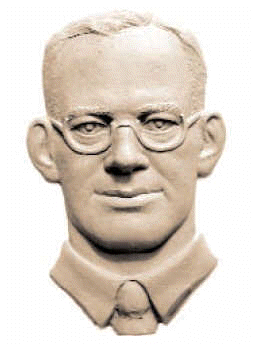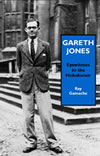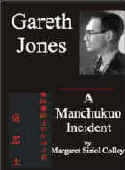Gareth Jones
[bas relief by Oleh Lesiuk]
HOME |
Stop Press |
Complete Soviet Articles & Background Information |
Précis of Gareth's
|
All Published Articles |
BOOKS
|
|
|
|
More Than Grain of Truth(2005) |
|
|
TOPICAL
'Are you Listening NYT?' U.N. Speech - Nov 2009 |
Gareth Recognised at Cambridge - Nov 2009 |
Reporter and the Genocide - Rome, March 2009 |
Order of Freedom Award -Nov 2008 |
Premiere of 'The Living' Documentary Kyiv - Nov 2008 |
Gareth Jones 'Famine' Diaries - Chicago 2008 |
Aberystwyth Memorial Plaque 2006 |
GENERAL
Scholarship Fund |
Site Map |
Links |
Legal Notices |
Sponsored Links |
Contact |
|
On Sunday morning, I woke up to hear the Baron say: “Gentleman it is five o’clock.” He woke us up much too early! We dressed, breakfasted from our own supplies and before 7 a.m. we dashed off to a hill about seven miles away, where the great feast was to be held. Dozens of blue tents had been put up. Hundreds of Mongols in silks of reds and blues, princes with peacock feathers in their hats and also some in purple and red robes - all the cream of this part of Inner Mongolia had come to pay their respect to the Spirit of the Mountain. On top of the hill was a cairn of stones with a pole. (They call the piles of stones in sacred places here “obos”). In front of the pile were about 25 lamas in yellow silk and broad-rimmed hats looking like Cardinals, were chanting Tibetan music. Then the Prince, who was now in red, came riding up the hill with horsemen following. He came and sat down in front of the lamas. With him sat his little son aged about five years old. He had a little red hat on with a number of pearls, a jade brooch and a brown silk coat with a design of yellow squares on his back. He had a lama guard. The lamas sang, shouted and threw rice. Then they all marched round the obo three times and suddenly started throwing coarse flour at each other. They roared with laughter. They threw flour at the masses of stones, then bombarded each other. It was just like an old-fashioned slapstick comedy where people threw cakes at each other. Round the obo were numbers of offerings of meat, cheese, cakes and other delicacies! That religious ceremony over, we all descended the hill. Lambs (sheep) had been brought to be slaughtered and soon we were eating mutton with our fingers. The Prince sat in his tent to watch festivities. He was clad in yellow with a conical hat with red threads. He was seated on a throne with a dragon design and before him is a huge mass of cakes. Next to him on his left sat his elder son adorned with pearls and jade jewellery playing with a smaller pile of cakes. The number depended on the importance. Looking out of the tent we could see the riders and retainers who are allowed to wear peacock feathers on their heads, which makes them very official. The button on top of the skullcap signifies rank and a direct descendant of Genghis Khan. Before the Prince’s tent, there is a square cloth, about 20 yards in front, directly in line with the entrance. It is to prevent evil spirits from entering the tent. The Prince joined the revellers and with his bow and arrow shot the bull’s-eye twice. |
Gareth at the Lama service. |
|
|
|




